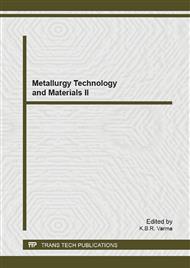p.148
p.153
p.157
p.161
p.165
p.171
p.175
p.179
p.188
Experimental Study on Geometries Energy Absorption of Fiber Metal Laminated Mild Steel under Axial Compression
Abstract:
Crashworthiness is the ability of a structure to protect its occupants during an impact. Depending on the nature of the impact and the vehicle involved, different criteria are used to determine the crashworthiness of the structure. The combination of metal and composite layers is known to displays plastics deformation and failure mode composite layered. The capable of structures to absorb large amount of energy are great interest in an effort to reduce the impact of collision. In this experimental study, an investigation will be carried out on geometries behavior of fiber metal laminated mild steel under axial compression. For structures subjected to compression, energy absorption is highly desirable and will depend on its physical shape. The efficiency is measured in term of the absorption performance that is higher in hybrid composites than in metallic and composite structures. Much of the working assessing the energy absorbing capability of composite materials and structures under compressive loading has been to a greater extent restricted to axis metric tubes. Therefore, it will contribute knowledge on how to design hybrid composite material tubes to develop a stable or controlled compression response under sustained axial loading.
Info:
Periodical:
Pages:
165-170
Citation:
Online since:
September 2013
Price:
Сopyright:
© 2013 Trans Tech Publications Ltd. All Rights Reserved
Share:
Citation:


